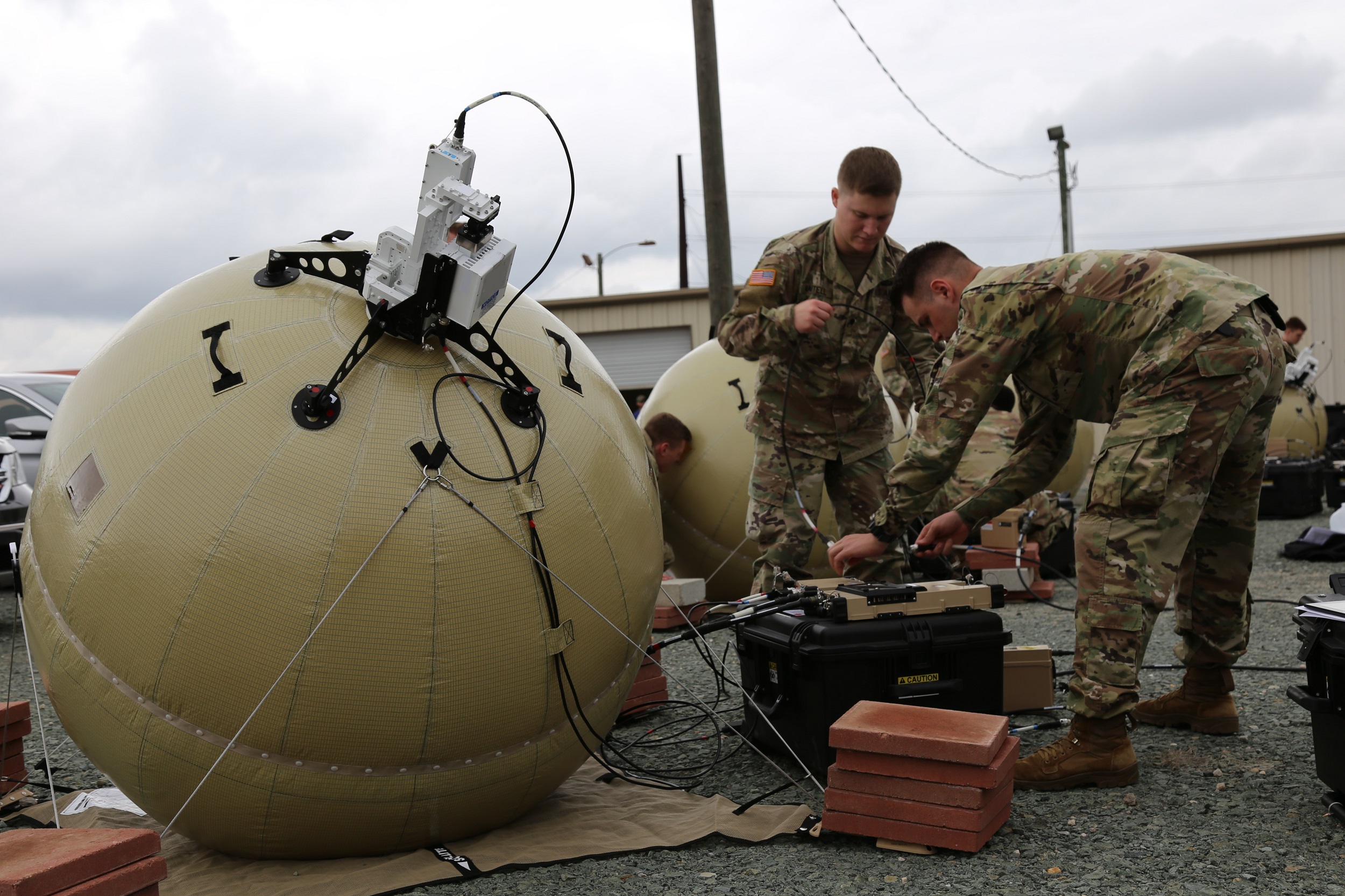
PM Perspective
Col. Michael J. Thurston
Want faster acquisition?
Reforming the process isn’t the answer, says a seasoned PM, who recommends instead a greater emphasis and more education on tailoring and risk management.
by Ms. Bridget Lynch
This column is the second in an Army AL&T series, PM Perspective, which looks at acquisition from the viewpoint of the program, project or product manager. These are big programs—generally Acquisition Category I and II— not only in terms of their importance to the Soldier, but also in terms of sheer dollars. How do PMs deal with the complexity of these programs? What do they wish they’d known then that they know now? What lessons can other PMs take from their experiences?
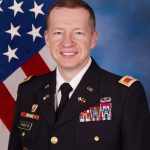 Col. Michael J. Thurston’s Army career began in 1988, when he was commissioned as a Signal Corps platoon leader and executive officer. He became part of the Army Acquisition Workforce in 2003, with his assignment to the Project Manager for Tactical Radio Communications Systems at Fort Monmouth, New Jersey. Since then, he’s held several positions with the Program Executive Office for Command, Control and Communications – Tactical (PEO C3T) at Aberdeen Proving Ground, Maryland, and with the Army G-6, the U.S. Army Communications-Electronics Command and the U.S. Army Signal Center. He’s now PEO C3T’s chief of staff, a position he has held since September 2017.
Col. Michael J. Thurston’s Army career began in 1988, when he was commissioned as a Signal Corps platoon leader and executive officer. He became part of the Army Acquisition Workforce in 2003, with his assignment to the Project Manager for Tactical Radio Communications Systems at Fort Monmouth, New Jersey. Since then, he’s held several positions with the Program Executive Office for Command, Control and Communications – Tactical (PEO C3T) at Aberdeen Proving Ground, Maryland, and with the Army G-6, the U.S. Army Communications-Electronics Command and the U.S. Army Signal Center. He’s now PEO C3T’s chief of staff, a position he has held since September 2017.
PEO C3T develops, acquires, fields and supports the Army’s mission command network to ensure force readiness, delivering tactical communications so commanders and Soldiers can stay connected and informed at all times. Its work to deliver the network to regions around the globe enables high-speed, high-capacity voice, data and video communications to a user base that includes the Army’s joint, coalition and other mission partners.
Thurston holds an M.S. and a B.S. in electrical engineering from Worcester Polytechnic Institute, as well as an M.S. in national resource strategy from the Industrial College of the Armed Forces of National Defense University. His awards include the Legion of Merit, Bronze Star Medal, Defense Meritorious Service Medal (one oak leaf cluster (OLC)), Meritorious Service Medal (two OLCs), Army Commendation (three OLCs), Army Achievement Medal, National Defense Service Medal with Bronze Star, Armed Forces Expeditionary Medal, Iraq Campaign Medal, Global War on Terrorism Expeditionary Medal, Global War on Terrorism Service Medal, Humanitarian Service Medal, Armed Forces Reserve Medal and the Parachute Badge.
As modernization plans take shape, much attention has been paid to revamping the myriad processes that guide Army acquisition. Not so fast, says Col. Michael J. Thurston, chief of staff for the Program Executive Office for Command, Control and Communications – Tactical. The acquisition process isn’t the problem, he said. “My recommendation would be to stop spending so much effort reforming the process and start teaching and emphasizing acquisition tailoring and risk management.” Sure, tweaks can be made to statutes, regulations, organizations and procedures, he conceded, “but there is already substantial flexibility and a significant number of tailoring tools available to the ‘big A’ acquisition community.”
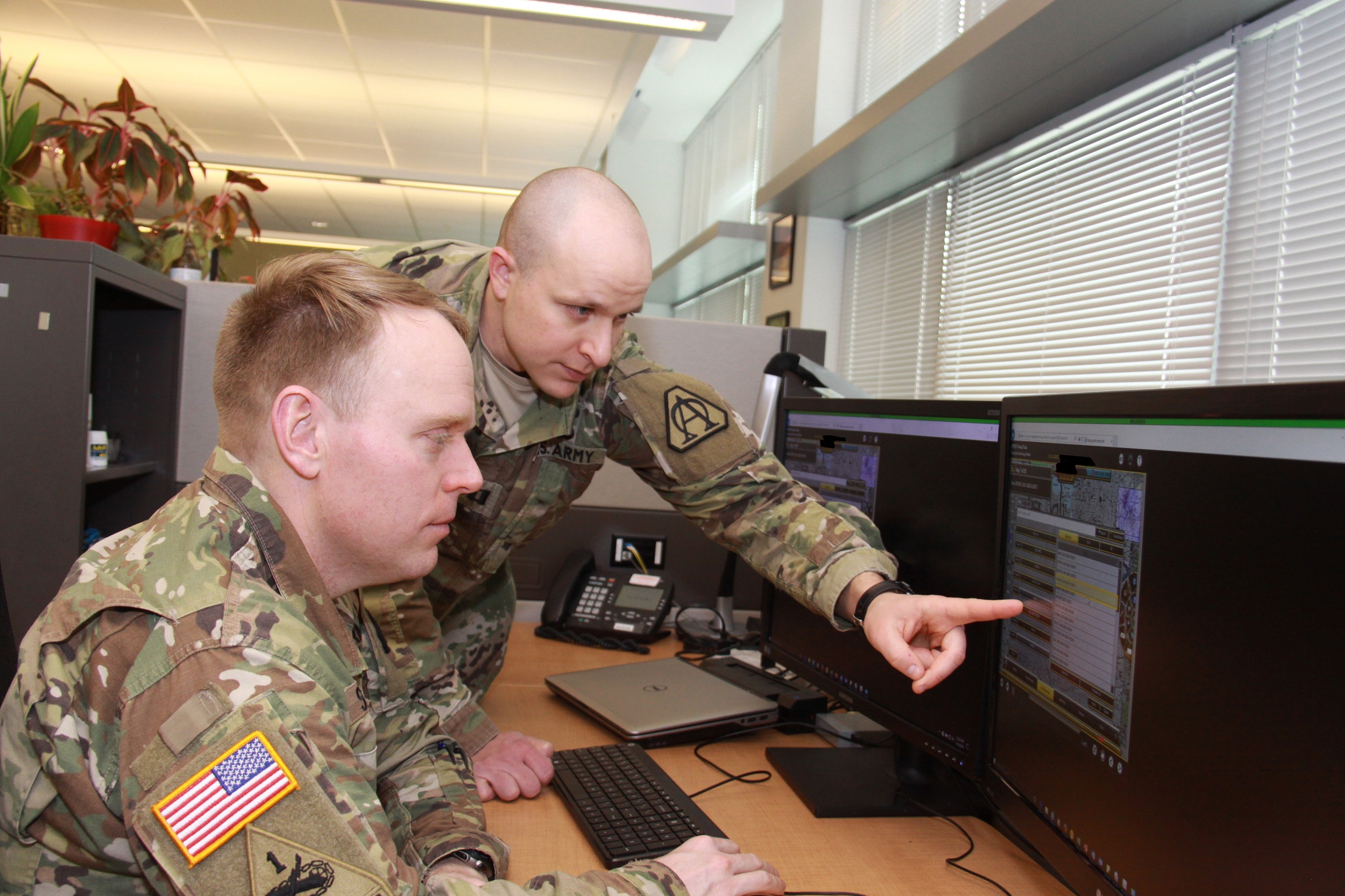
Capt. Doug Williams (standing) and Capt. Jake Singleton review the Joint Battle Command-Platform’s new interactive multimedia instruction software at Aberdeen Proving Ground, Maryland, on Jan. 10, 2018. The IMI software will allow Soldiers to train on JBC-P from a CD, the Army’s online training tool LandWarNet, or embedded on vehicle hardware known as Mounted Family of Computing Systems. (Photo Credit: Dan Lafontaine, PEO C3T Public Affairs)
In Thurston’s experience, “the paralysis experienced in many developmental efforts is not caused by process, but by our collective inability to assume, manage and mitigate risk. Time and time again, I have seen instances where the acquisition system is so risk-averse that we fail to make a decision on a better, cheaper product for fear of perceived cost, performance or perception issues, while we continue to spend significant national treasure on buying and sustaining less capable and more costly systems.”
Based on a 30-year Army career and an extensive acquisition background—having worked in the requirements community as a systems engineer and in all levels of program management, and having executed numerous operational tests and been part of dozens of decisions on the Army staff—he noted that no one in the acquisition process is immune from this way of thinking. “It is rather ironic that an organization that is exceptionally competent at operational risk management has not transferred those same leadership and management skills to the major acquisition processes of requirements generation, programming and program management,” he said.
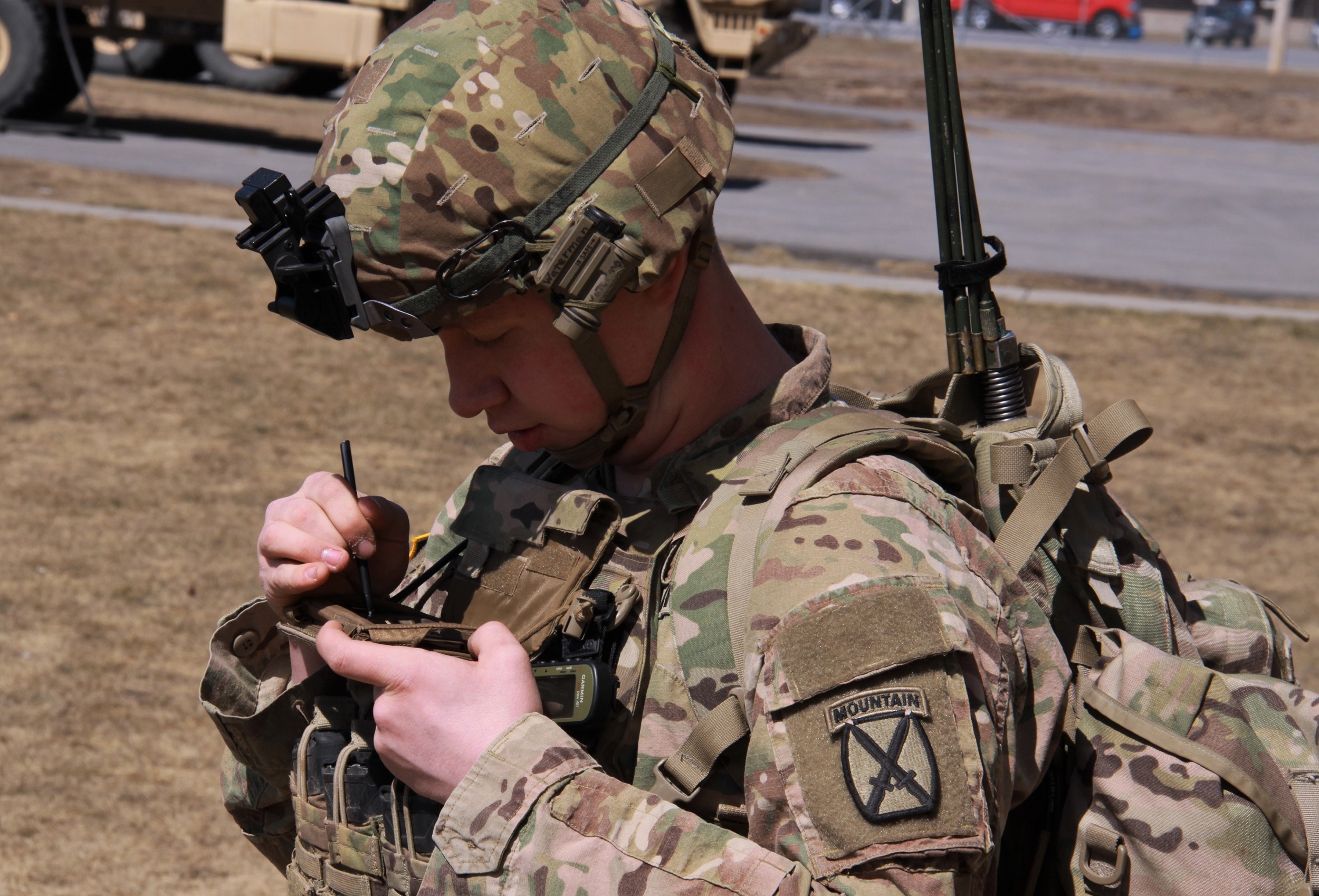
A Soldier tests the Precision Fires-Dismounted application on the Nett Warrior End User Device during fielding at Fort Drum, New York, April 5, 2018. (U.S. Army photo by Dan LaFontaine)
LAYERS OF LEARNING
As PEO C3T’s chief of staff, Thurston manages more than 1,600 people who acquire, field and support the communication networks, radios, satellite systems and other hardware and software that Soldiers require for information dominance on the battlefield. He has three main roles: manage PEO staff, advise PEO leadership and assist project managers (PMs) in preparing for programmatic and milestone decisions.
It’s a role for which he’s well-suited, given his previous assignments. “I have had the pleasure of working in every project management level in the PEO, so I am very familiar with the portfolio of products and the resources the PEO has available,” he said. “My time on the Army staff exposed me to the information needs of Army senior leaders and decision-makers and the importance of timely, concise, accurate and consistent reporting. I understand the many demands placed on PMs and how every task or action has a cost and value associated with it. As the chief, it is my goal to minimize impact on the PMs, ensure that engagements with decision-makers are productive and gain the most value out of every action.”
Before moving to chief of staff, Thurston was PM for Mission Command, managing a dozen Acquisition Category (ACAT) I, II and III programs, along with several pre-ACAT and non-program-of-record efforts. His budget of about $1.4 billion included a mix of development, production and operations funds, and his accomplishments during the four years he served as PM are noteworthy, including fielding the Joint Capabilities Release software and the Blue Force Tracking 2 network; developing, testing and fielding the Joint Battle Command – Platform system; developing the tactical server infrastructure for command posts; developing the Precision Fires – Mounted and Precision Fires – Dismounted systems; establishing the acquisition strategy for Advanced Field Artillery Tactical Data System 7.0; and fielding thousands of mission command systems in support of the Army’s capability set and unit set fielding strategies. Additionally, he and his team established the architecture, system design and acquisition strategy for the Command Post Computing Environment and the Mounted Computing Environment.
“We had programs in every acquisition phase, from science and technology transition to divestment,” Thurston said. “We supported stakeholders from the mission command, maneuver center, fires, cyber and intel communities; we were in the process of merging cultures from two project offices; and we supported a mix of products, some that were highly sought-after and others that were highly criticized.” The best way to summarize those experiences into a single lesson learned? “Take a moment to identify which tasks are urgent and what is important,” he said. “Most often, the urgent things aren’t what is most important. Resist the urge to chase the urgent but unimportant. Instead, establish a vision and communicate it well. Create a plan with your team and keep them focused on it. Nurture the team, feed the vision, regularly check progress and beat down the distractions.”
Before his PM assignment, Thurston was the deputy to the deputy for acquisition and systems management in the Office of the Assistant Secretary of the Army for Acquisition, Logistics and Technology (ASA(ALT)). That role and his PM assignment taught him the importance of early engagement and building trust with stakeholders, including PEOs, ASA(ALT) and the Office of the Secretary of Defense. “It’s critical to truly understand the information needs of the staff and the decision-makers, and to recognize that those needs are different. You must gain the trust of the staff by answering their questions thoroughly, transparently, consistently. Most importantly, meet your commitments.”
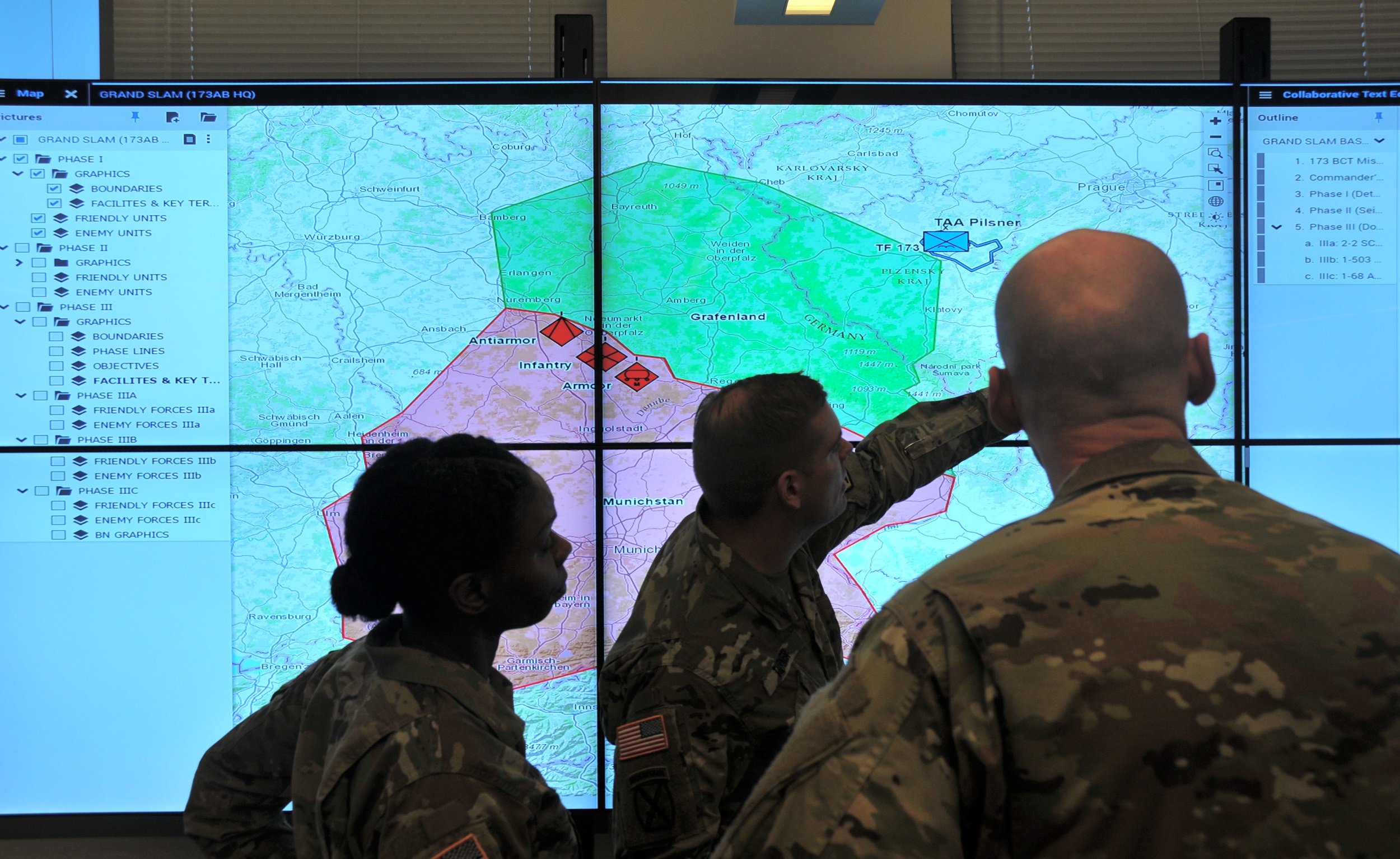
Soldiers demonstrate the Command Post Computing Environment prototype at Aberdeen Proving Ground, Maryland, on May 16, 2017. The CP CE infrastructure, consisting of a new single tactical server infrastructure plus a common software baseline, will provide Soldiers an underlying core CP system upon which additional warfighting functionality can be built. (U.S. Army photo by Dan Lafontaine)
NEVER TOO EARLY FOR INPUT
Incorporating all stakeholders, particularly end users, early in the process is something PEO C3T stresses, and something it’s hoping to improve upon by incorporating DevOps—a mashup of development and operations—into their program constructs. “A system acquisition starts with user representatives establishing requirements, and these representatives are typically involved throughout the acquisition process,” Thurston explained. “Although beneficial to the acquisition process, these user representatives don’t always fully embody the voice of the end user.” For example, PEO C3T end users include not just signal Soldiers, but all functional branches and all tactical warfighting echelons in the Army.
To address that, programs frequently incorporate user juries, demonstrations and exercises to gather feedback from a variety of end users. However, Thurston noted, this step often comes too late in the process to make substantial changes to the system design, and it is not robust enough to ferret out weaknesses in the system. That’s where the DevOps approach comes in. Technically a software development approach that allows continuous collaboration across all functions in the software development and delivery process, the Army uses the term more broadly to describe frequent interaction with end users during the development process for any system or capability.
“DevOps allows for more robust feedback earlier in the acquisition process,” Thurston explained, “and truly successful DevOps in the Army requires an established relationship not only between the PM and a tactical unit or group of units that will exercise prototypes of its system, but also with the network cross-functional team.” For example, the network cross-functional team, working closely with the PEOs for Soldier and C3T, is conducting experimentation with light infantry units to assess a package of network capabilities. This early DevOps approach will help inform how operations at company and below can use information technology capabilities originally designed for special operations forces’ and commercial use.
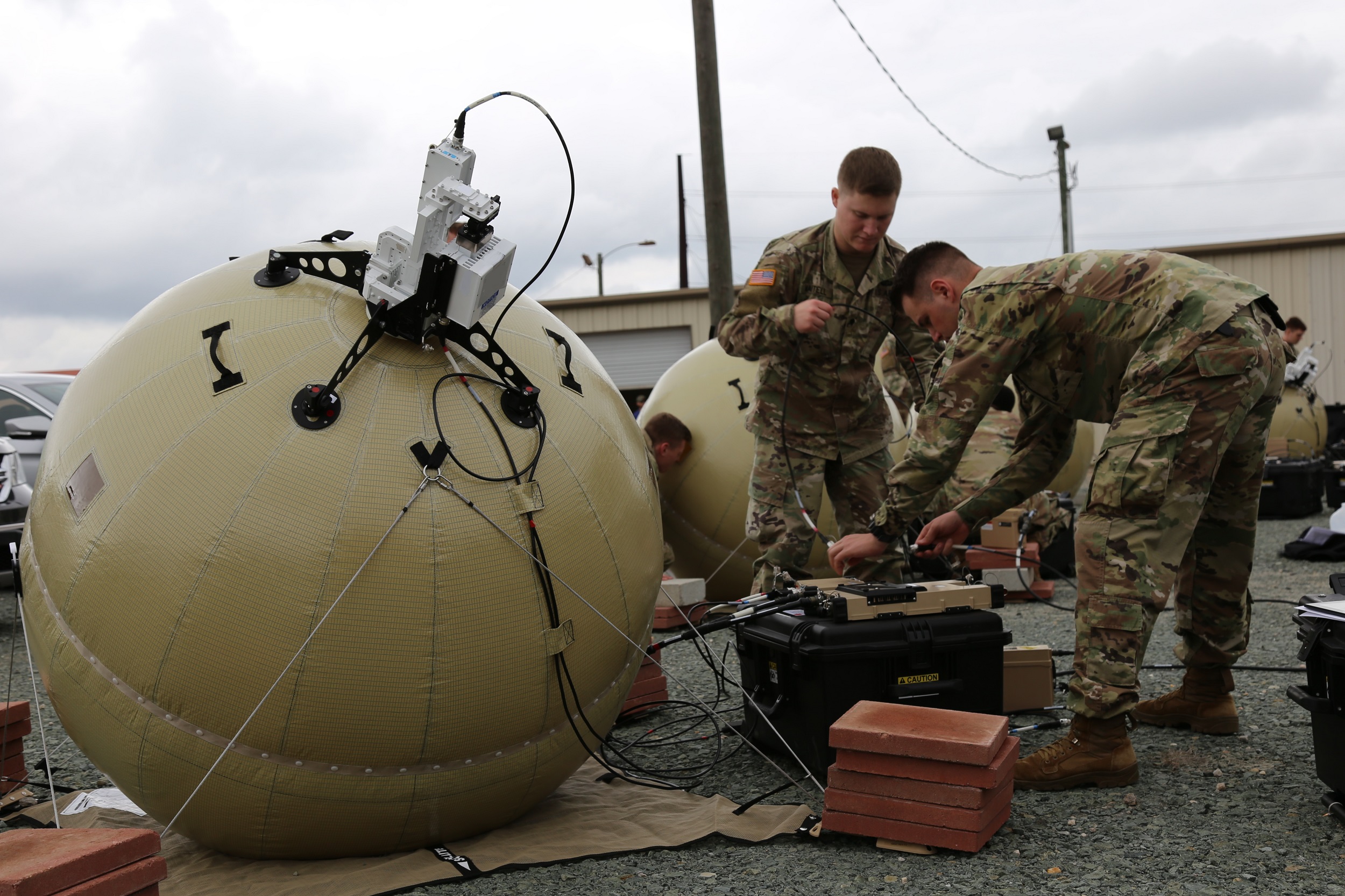
In support of initial entry and other tactical edge missions, PM Tactical Network/PEO C3T equipped the first unit — the 3rd Brigade Combat Team, 82nd Airborne Division — with the new inflatable satellite communications system known as Transportable Tactical Command Communications, or T2C2, to enable expeditionary mission command and situational awareness in the heart of evolving fights. (U.S. Army photo by Amy Walker, February 21, 2018 )
CONCLUSION
Having achieved a great deal over the past 30 years, Thurston says there are a few things he wishes he had done differently. “When I first became a product manager as a lieutenant colonel, my first actions were to dive in and become an expert on the system I was charged to manage,” he said. “However, I discovered over time that you don’t have to be the smartest person in the room on your product. You should instead surround yourself with others who are smarter than you.”
As a PM, his first actions were instead to focus on and understand the acquisition strategies, program fundamentals—cost, schedule and performance—and resources available for the products in his portfolio. That approach made him a better PM, he said, but didn’t always produce the best results for his programs. “If I had the opportunity to do it again, I would have taken a page from the late Maj. Gen. Harry Greene’s philosophy and focus my first and recurring actions on understanding your stakeholders: what they want, what the end users really need, what they think of your products and how stakeholders perceive your organization.”
At its core, he said, acquisition is two things. First, acquisition is business—it’s not personal. “Be committed, be competent, be collaborative, but do not take it personally.” Second, acquisition is hard. “Every worthy challenge is. If it was easy, everyone would do it.”
For more information, go to the PEO C3T
MS. BRIDGET LYNCH has provided contract support to PEO C3T since 2012 as a public communications specialist for Bowhead Business and Technology Solutions. She holds a B.S. in mass communication from Towson University.
This article will be published in the July – September 2018 issue of Army AL&T magazine.
Subscribe to Army AL&T News, the premier online news source for the Acquisition, Logistics, and Technology (AL&T) Workforce.







